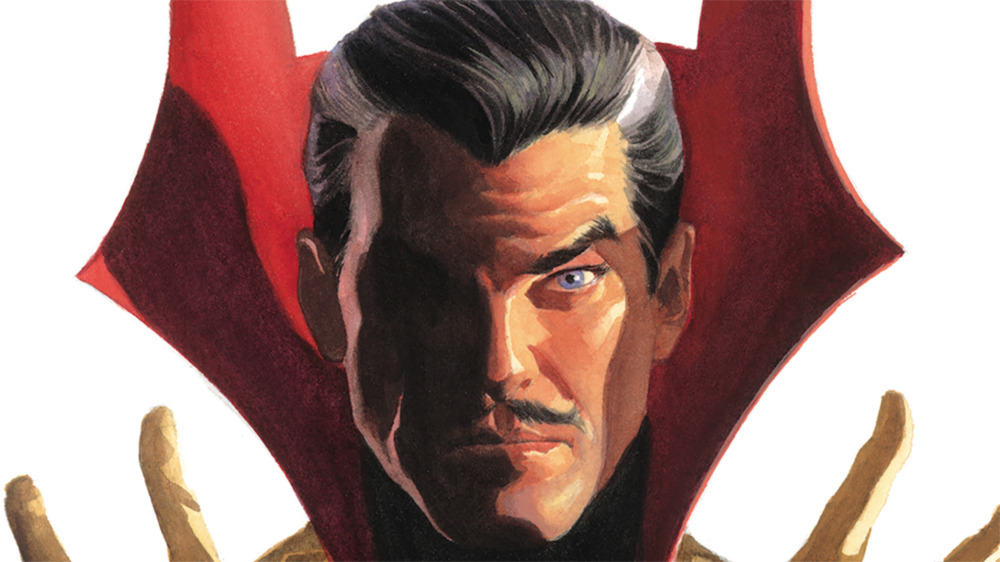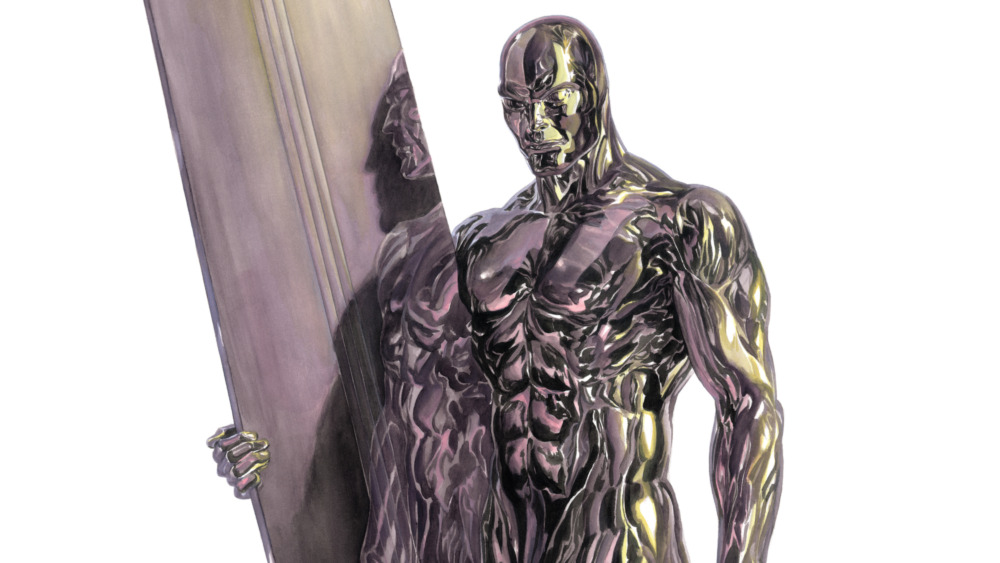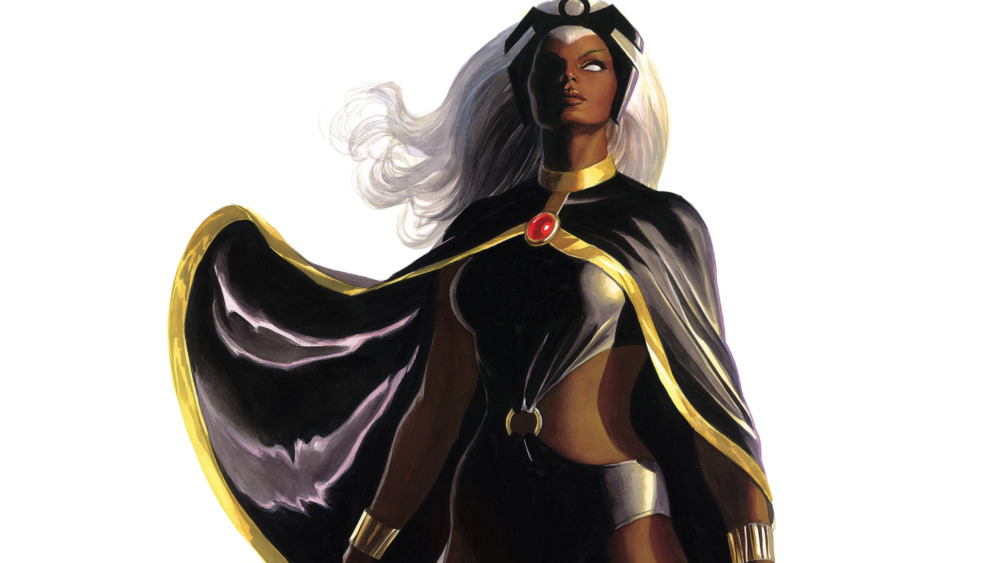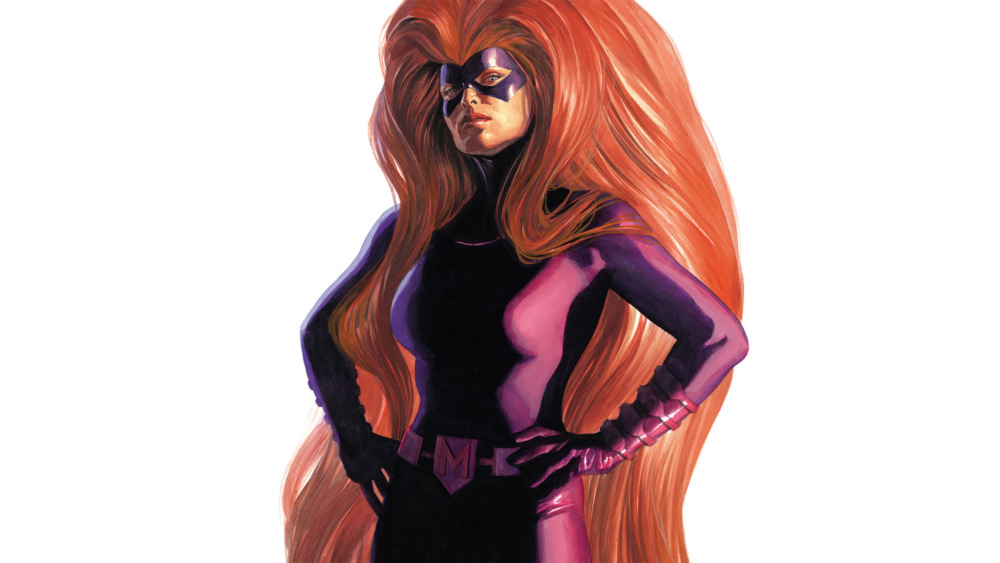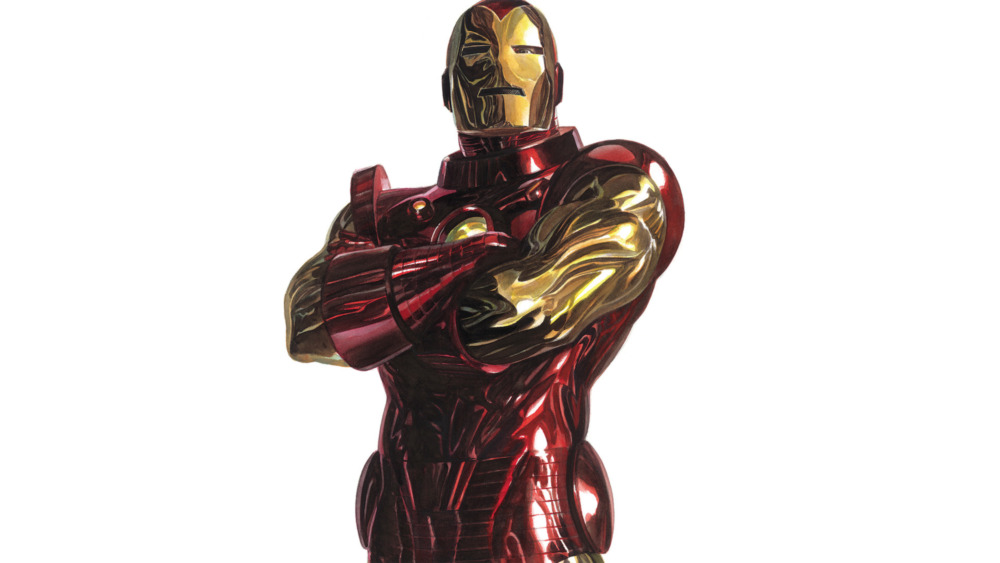Comic Book Artist Alex Ross Talks Marvel Superheroes, His New Book, And More - Exclusive Interview
If you read superhero comics, you already know Alex Ross. If you don't, well, you probably should anyway. Ever since making his comics debut in 1990 — and particularly after the one-two punch of 1994's Marvels and 1996's dystopian superhero epic Kingdom Come — Ross quickly became one of the most popular and acclaimed comic book artists of all time. Seriously: Ross won the Comics Buyer's Guide's annual Favorite Painter award so many times that the publication retired the category entirely.
It's easy to see why. Ross' painted, highly-rendered illustration style doesn't look like anything else on comic shop shelves. It's not quite photorealistic, but it feels real. Before superhero movies began to dominate the box office, Ross' illustrations were the best way to see what DC and Marvel's heroes might look like in the real world. The appeal of Ross' work goes beyond that, though. Every one of the hundreds, if not thousands, of pieces he's done perfectly captures the essence of these iconic characters. There's a reason why Ross' designs have popped up in Wonder Woman 1984, the CW's big Crisis on Infinite Earths crossover, David Ayer's Suicide Squad, and more.
And now, you can hang his work on your wall. The Alex Ross Marvel Comics Poster Book contains 35 stunning posters depicting Marvel's most influential characters, rendered in Ross' signature style and ready for framing. In addition, Ross also offers his insights into the characters he depicts, why he chose them for the mural, and his love of superheroes. As Looper's exclusive interview with Ross shows, his enthusiasm for all things super is infectious. When all's said and done, he's a fan just like the rest of us.
How Alex Ross composes the types of images that made him famous
In The Alex Ross Marvel Comics Poster Book, you make it clear that you've loved superheroes since you were a kid. When you started training to be an artist, was illustrating comic books and superheroes always your goal?
Well, I certainly had the goal of wanting to do this as a career. The difference is, I didn't think it was going to be terribly easy to get into the field. I'm luckier than most people, because I was able to get in really early, but I did work elsewhere simultaneous to my first comics jobs. I had a day job working in advertising doing storyboards.
I went to school with the knowledge that you need to get the skills that will get you paid somewhere. The overall goal, the life goal of working in comics, can be one of those things you build up to. I made drawings of story pages just to have those ready, to be able to share them. And right out of school, I was getting connections that were leading me to a local comic book company that opened the doors for me.
How did you arrive at your style, given that comic books were the goal? The photorealistic look you're known for isn't really like the other stuff that was coming out at the time.
Well, there was a movement for painted comics that was happening. You do have a number of things coming in the '80s, when there were more and more painted graphic novels. There was stuff that was breaking new ground, like [books] by Bill Sienkiewicz and Jon Muth, who were both working for Marvel. And Marvel had an imprint called Epic where they published a lot of these kinds of things in either series or graphic novel form. And that was showing me one way of the future.
My school really made the biggest impression on me, because I was working from live models. I was following in my mother's footsteps, going through the same education she got 40 years before me. Ultimately, I was bringing my school and the history of straight American illustration into this field that already kind of had an opening for it. There's a large precedent of painted work in comics, but my part in that history is to maybe normalize it slightly more.
You've done a lot of work with live models, but in the book you keep referencing all these reference sculptures you've made. Do you just have a bunch of sculptures lying around your house of various superheroes?
Absolutely, yeah, I do. I'll show you one right now I'm holding. This is one I have of the Thing. I use that for lighting all the time.
When you're creating these sculptures for reference, what's the process for designing those, and how does it differ from making a sculpture that's going to be sold commercially?
As far as the level of work that you're putting into something that you only would use yourself, you could be limited in how much effort you want to make. If I'm rendering a face and I get really tired around the time I'm trying to delineate the ears, which are very hard to sculpt, I could do a fairly sloppy job. If I know it's going to be a released product, I'll work harder. But generally, the standards for what I'd like to have in hand for myself are about the same as what they would be for a finished product.
Then, of course, it goes into the casting and materials. I might have something that's a sculpture made with either scoping material that's hardened, or epoxy. There are materials you can make at home, and it's hardened and it's usable. I like to go through the whole process of getting something cast, and then I paint the casting of it. It means an additional cost for me to do that, but it's a lot closer to having an officially made product. I also use a lot of high-end dolls that are made these days based upon movies and TV characters. These things look incredibly realistic and they photograph extremely well.
Do you have a favorite sculpture of the ones you've made?
Well, I mean, I'll just cite the Captain America. That's shown in the book. I engaged with a lot of help to do it. I have a full-sized statue of him, a life-size Captain America, in my house so that I can go and photograph him any time I need to illustrate the character, which is a lot.
Alex Ross shares some forgotten favorites from superhero history
In the introduction to The Alex Ross Marvel Comics Poster Book, you compare doing a mural for DC and doing a mural for Marvel. You say there had to be "a different attitude in the approach" to illustrating the two companies' characters. Can you talk a little bit what that means? What is the attitude difference?
You know, I think I've always looked for a kind of kinetic difference. Like, you always feel a certain agitation and a visual restlessness with Marvel characters, because the design aesthetic of the creators of these characters, like Jack Kirby and Steve Ditko, is removed from the more stoic art styles that define DC.
DC already had a large jump on Marvel, going from the late '30s all the way up until the '60s, when Marvel started to form itself and really take hold. They had the benefit of being more contemporary when they were creating this stuff at Marvel. DC I think of as the "shining city on the hill" art style. The characters are the golden icons of heroism. The Marvel characters are a twist on that, in effect. And there's a very thoughtful aspect of that you want to bring in.
But artistically, how do I represent it? I put shade on one side of their body. It's no more complicated than that.
In the poster book, you mention your fondness for retro designs and older characters like Namor, and you've done lots of work with the original Human Torch and other Golden Age characters. Now that Marvel is going a little deeper into its catalog for the movies, are there any Marvel characters you'd like to see get a modern-day revival?
I do have an answer for that, and that would be the original Ghost Rider, who is a character from 1950, and who is a Western hero. And he looks like a totally white Spider-Man. He's got the white eye shapes, so a completely white outfit with a big white cowboy hat. He rides a white horse, and his whole aesthetic is he supposed to glow in the dark, so that when people in these old West stories would see him he was supposed to appear like a ghost.
Marvel actually didn't originally publish him first, but they acquired the rights back in the '60s. And then, of course, they would not just reprint this character in new stories, but they then decided to make the new version we know now, which is the flaming skull riding a motorcycle. Not that we have a desperate need for Westerns to come back, but he is such a cool-looking character that what do you care if you have some modern use of this guy, riding a horse into the middle of Manhattan or wherever, wearing this white costume? He's just a gorgeous character and I'd love to see a full series revival with him.
We're finally getting to the point where the general public is getting to know the names of Marvel artists like Jack Kirby and Steve Ditko, who co-created all of the famous characters they see in the movies. Which Marvel artist do you think those people should also know, but don't?
Well, that's the name I dedicated this book to, and that's Dave Cockrum. Dave's redesigns of famous characters, as well as completely original characters, in the X-Men is one of the biggest impacts in comics that we still have reverberating today. I mean, he created Nightcrawler, Storm, and Colossus, and redesigned much of what you think of with the X-Men.
Wolverine. He's the first guy to give you what Wolverine looks like without that mask on, so when you think of that hair, that's Dave Cockrum. And he would go on to do the same thing for Ms. Marvel. He had already come from DC, where he did the same thing with the entire Legion of Superheroes. I didn't know it as a kid growing up, but this team I loved was entirely redesigned by this one man. I grew to appreciate him the older I've gotten, and have thought I'd like to pay greater and greater tribute to the specific style of his contribution to comics, because I think it affected everything.
Alex Ross reveals the secrets behind a great superhero costume
What do you think makes a good superhero costume?
I think timelessness to some degree, because if it looks anchored to one era than it is going to be kind of forgotten.
I would have loved in this book, which is collecting these figures I picked out of Marvel's characters, to have included Luke Cage. I don't want to do today's conception of Luke Cage, who has a shaved head, and goatee, and looks like pretty much anybody you could run into. He looks like my personal trainer. The guy who had the tiara headband, and the yellow shirt, and the chain belt, that's the guy I want to draw. That's the icon to me.
And he looked that way for the first 25, 30 years of his existence, but eventually people get in mind, "No, no, you've got to make them more contemporary." Somebody like that looks dated to his time period — in a fun way — but now nobody can wrap their head around trying to make that practical now. There are certain designs, like bellbottoms on clothing or certain hairstyles, that look like they're anchored to their given decade. You want to have something that almost looks like it could have appeared in the 1940s for it to be kind of timeless, almost like a costume that a Greek god could have worn.
Besides Cockrum's X-Men, are there any redesigns that you think are particularly effective? Because superheroes do change their looks fairly often.
Yeah, and it's a good thing that people get a chance to put a new skin on these characters, just to show how they can update or improve a design. Often, it's best applied when they're taking something that isn't as appreciated as it could be, and they give it a sort of veneer that makes a classic look much more appreciable.
As far as a new design that I'm particularly taken with, I'll just say Miles Morales. He's not replacing Spider-Man, but that whole reversed-out Spider-Man, the black costume with red webs, it's gorgeous. It's a great design that honestly could have appeared 50 years ago and would have been fine then. So timeless is active in a design like his.
Alex Ross' favorite project, Marvel movie, and the character he'd most like to work on
Is there a character that you haven't gotten to work on professionally, but that you would like to?
I published a book recently with a bunch of sketches for different things that never saw fruition as final works of art. I've gotten to do a lot of artwork of bands, and all of this has been with licensing, so it's been with the approval of the Beatles or the Monkees.
The one that slipped away from me, and this is with an actual connection to the representatives, I've not been able to fully execute a Queen piece. I'd like to illustrate '70s-era Freddie Mercury, which may be part of the problem. Maybe they just don't want that time period of him. I did an illustration laying out that and it's gone through various levels of approval and they've bounced stuff back at me. And I don't know, maybe it'll happen someday. Maybe it'll never happen, but Freddie Mercury will be my answer to that.
Of everything you've worked on, do you have a favorite piece or project?
One of the things I did that I was extremely proud of at the time, and I've been proud of since, and it goes overlooked because it's not currently in print, is my Uncle Sam series for DC Vertigo. That was something where I actually forced myself to step away from the indulgence of always getting to draw costume characters, which I obviously love. Doing something based around both contemporary times in American history, and then also connecting to icons of art in characters that exist in the public consciousness, but that are not related to this art form. I was using the comics graphic novel art form to try and connect the dots of all American mythology in some ways. And I'm very, very happy with that series.
What about a favorite Marvel movie?
Just because it's immediately come to mind, when you talk about the whole raft of movies that they've made, I would honestly say the very first Robert Downey Jr. Iron Man is such a solid piece of filmmaking. It's such a well-constructed story. It's got all the right kind of emotional beats and heart to it. I've seen that recently and it's like, "Wow, this still stands the test of time." They built this kingdom on very firm ground. It certainly has a lot of brethren in terms of the quality of films that would come after it. I think that might be the strongest.
You don't do long-form sequentials as often as covers, but it's always a treat when you do. Do you have any sequential projects sort of on the docket?
Yeah, I do. In fact, I'm going to start doing one now. I've laid it all out, written it. I've got a product with Marvel that will be an original graphic novel that will come out next year and I'll be starting finished work on it this month.
